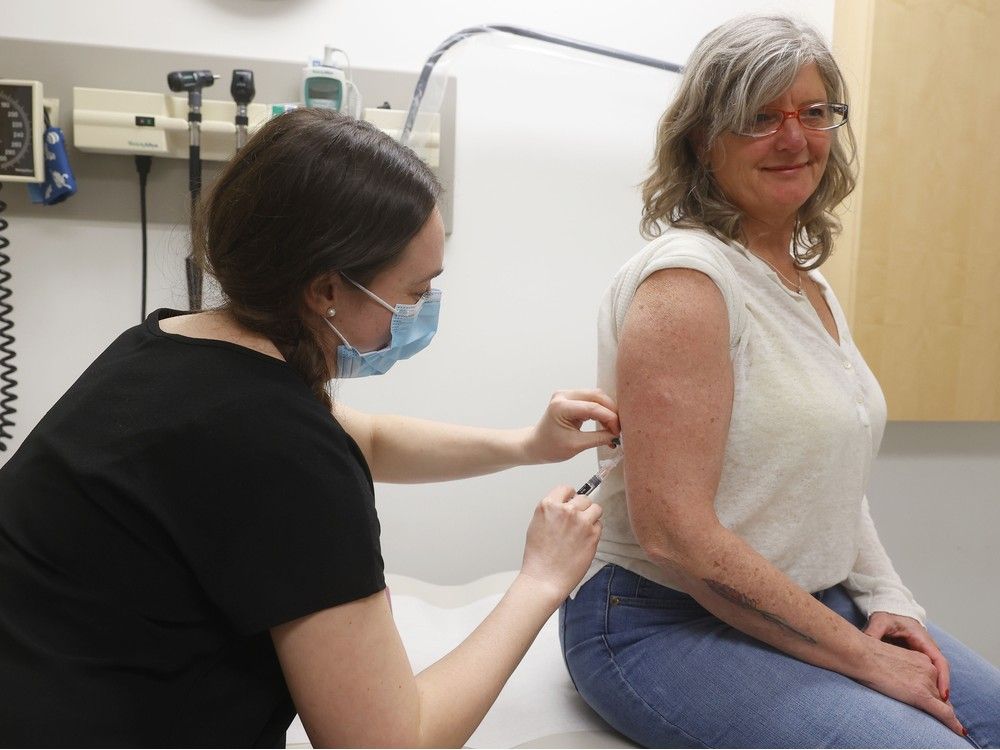A major outbreak of
measles has infected
more than 800 people in Ontario. It’s the first outbreak of its size since the disease was declared eliminated in 1998.
Now, lower vaccination rates are leading to a serious outbreak in the province, enough to garner a travel advisory to the province from New York State south of the border.
Here’s what you need to know about measles — how it’s transmitted, how you can protect yourself, and whether you need to update
your vaccinations
.
Where is the measles outbreak in Ontario?
The outbreak, which began last fall with a gathering in New Brunswick, is now spread across 15 Ontario health units with 816 confirmed cases. The biggest concentration of cases is in the Southwestern Public Health Unit (40 per cent of cases) and Grand Erie Public Health Unit (15.6 per cent of cases). Public health units in Chatham Kent (11 per cent) and Huron Perth (11.5 per cent) also have had significant numbers of cases. The South East Health Unit, which includes Kingston and Belleville, has had 58 cases, amounting to 7.1 per cent of cases. There have been
no cases in Ottawa
, where the outbreak is being closely monitored, but at least one infectious disease specialist said it is only a matter of time.
What to know about the Ontario measles travel advisory
The New York State health department issued a
travel advisory warning
residents to check their immunization status before travelling to Ontario and noting that because measles is so contagious, “it easily crosses borders.” It also warned about measles cases in many parts of the U.S.
Can you get measles if you are vaccinated?
The vast majority of infections in Ontario’s outbreak have been among people who are unimmunized, mainly children. But rare breakthrough cases can occur in people who are vaccinated but may be in close contact with someone who is infected for a prolonged period. Such cases are usually milder and less likely to result in severe outcomes.
Who needs a booster
Boosters are recommended for people born on or after 1970 who do not meet the definition of presumed immunity (that generally includes those who had one, not two, doses of
measles vaccine
). Those born earlier are generally presumed to have natural immunity (through infection), although some can be susceptible and may choose to get a booster. Infants, who usually do not get their first measles vaccine until 12 months, can get vaccinated as early as six months if they are at higher risk because of an outbreak or travel.
Health Canada has detailed criteria
on its website
on who should consider getting an updated measles vaccine.
Does an N95 mask protect against measles?
Yes, a well-fitted N95 mask can protect you from becoming infected with measles, which is highly infectious, airborne and can remain in the air for a long time. Health workers treating patients with unknown, confirmed or presumed measles infections are recommended to wear N95 masks.
How does measles spread?
Measles is highly contagious and spreads through the air. You do not need to be in direct contact with someone who is infected to be exposed. Just passing through a room where someone who is infected had been for up to two hours earlier can result in an exposure and possible infection to those who are susceptible. That is why public health officials issue notices when a person later found to have measles has spent time in public spaces while infected.
How contagious is measles?
Measles is believed to be the most contagious known infection. One infected person can potentially infect between 12 and 18 other people (if they are not immune) and that exposure can take place up to two hours after an infected person has left a room or other space.
What does measles look like in the beginning?
Symptoms can develop between seven and as long as 21 days after exposure to the virus.
It typically starts with cold-like symptoms, including fever, cough, runny nose and red, watery eyes. Tiny white spots can occur in the mouth. Symptoms may also include sensitivity to light. The characteristic blotchy rash does not usually appear until three to seven days after initial symptoms. It often starts on the face or neck. Severe complications are rare, but they can include respiratory failure, swelling of the brain and death. Those at greatest risk of complications are unvaccinated infants, unvaccinated pregnant people and those who are immunocompromised.
Is measles itchy?
No, the blotchy rash is not typically itchy.
Is measles deadly?
In rare cases, it can be. In higher-income countries such as Canada, the death rate is considered to be between one and 10 out of every 10,000 cases. It is significantly higher in other parts of the world. The most recent death in Canada was a Hamilton infant in 2024. There have been no deaths associated with the latest outbreak in Ontario, but a parallel outbreak in the U.S. has now resulted in three deaths. In addition, one child died in Mexico. Other serious complications include encephalitis and pneumonia, and some health issues can occur years after an infection, according to researchers.
Related
- No measles cases in Ottawa, but demand for vaccine is growing
- Ontario measles outbreak grows to more than 800 cases
Our website is your destination for up-to-the-minute news, so make sure to bookmark our homepage and sign up for our newsletters so we can keep you informed.



